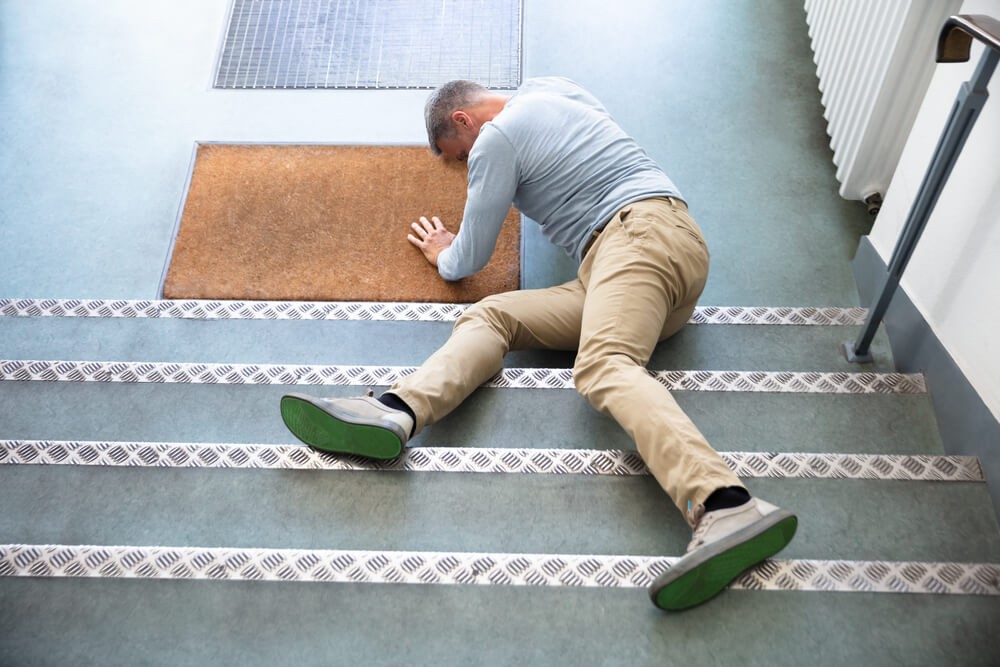The hum of conversation, the echo of footsteps, and the cool rush of air conditioning define the atmosphere of a typical Florida shopping mall. Families wander in and out of stores, teens gather with friends, and tourists take photos as they explore new places. Malls are designed to feel inviting—clean, open, and safe. Yet hidden within this familiar environment are risks that can transform an ordinary afternoon into a painful and unexpected ordeal. Slip and fall accidents inside Florida malls are far more common than most visitors realize, and understanding how these incidents unfold provides valuable insight into the protections available under state law. For injured individuals, firms like Chalik and Chalik serve as advocates during the complicated journey that follows a fall.
Imagine a shopper heading into a mall on a Saturday afternoon. After stepping inside from the humid Florida heat, her shoes pick up moisture from the tile just beyond the entrance. The floor looks clean, but a thin layer of water left behind by other guests has created a nearly invisible hazard. She takes one step, then another, and suddenly her foot slips forward. Time slows as she reaches out instinctively for balance, but the polished floor offers no grip. She falls hard. The sound echoes through the lobby, and people nearby turn their heads. Pain floods in as she struggles to move. What moments earlier felt like an easy outing now becomes a medical emergency.
This kind of scenario plays out repeatedly across Florida’s busy malls. High foot traffic, food courts, escalators, kiosks, and constantly changing weather conditions create risks that mall operators must actively manage. Florida premises liability law requires businesses to maintain their property in a reasonably safe condition, but determining whether a mall fulfilled that responsibility becomes the central issue in any slip and fall claim. Under Florida Statutes §768.0755, the injured person must prove that the property owner had actual or constructive knowledge of the dangerous condition. In many mall cases, constructive knowledge—whether the hazard existed long enough to be discovered or occurred regularly—becomes the focus of legal arguments.
Food courts are among the most common locations for slip and fall injuries. Spills happen quickly and often go unnoticed as people carry drinks, drop napkins, or leave behind ice from fast food cups. These hazards form a predictable pattern, and courts often analyze whether mall staff had consistent inspection routines in place to monitor these high-risk zones. The same is true inside major retail stores within the mall, where large aisles, glass bottle displays, and busy checkout lanes create persistent slip risks. Examining how courts evaluate these recurring problems can be seen in broader discussions about supermarket slip and fall claims, where similar hazard patterns and inspection issues frequently influence liability.
Another overlooked risk in malls involves environmental transitions. Moving from carpeted hallways to polished tiles near entrances or restrooms can cause sudden losses of traction. Outdoor walkways, especially during Florida’s rainy season, often track water into interior spaces. Mall operators know these transitions pose recurring risks and are expected to anticipate them by placing mats, conducting frequent inspections, or installing non-slip flooring. When these measures are absent, hazards can develop quickly and without warning, leaving shoppers vulnerable.
Escalators and elevators also contribute to common fall scenarios. Liquids spilled near these mechanical systems often pool unnoticed, and the movement of passengers stepping on and off can make small hazards far more dangerous. A single missed inspection or delayed cleanup can lead to significant injuries, especially for older adults or individuals with reduced mobility. After such an accident, the mall’s incident report, maintenance logs, and surveillance video become essential pieces of evidence. These records reveal whether the mall acted reasonably or whether negligence played a role in the injury.
Insurance companies representing malls often respond aggressively in slip and fall cases. They may argue that the hazard appeared suddenly, leaving no time for staff to discover it. They may also suggest that the injured person was distracted or wearing inappropriate footwear. These arguments echo defense strategies commonly seen in larger retail environments, including big-box stores. Reviews of Walmart slip and fall cases show how insurers often attempt to shift blame onto the victim to reduce compensation. Understanding this pattern helps injured individuals anticipate what they may face after a mall-related fall.
Beyond the legal complexities, the human impact of mall slip and fall injuries is significant. A fractured wrist can make it impossible to work or perform daily tasks. A back injury can lead to months of physical therapy. A head injury can result in long-term cognitive and emotional challenges. What begins as a simple outing ends in medical appointments, insurance disputes, and ongoing uncertainty. This is why early medical care and accurate documentation are essential. A person who seeks treatment promptly not only protects their health but also reinforces the credibility of their legal claim.
Chalik and Chalik, working exclusively on behalf of injured individuals, understand that mall slip and fall cases involve far more than legal arguments they involve people whose lives have been disrupted by preventable hazards. Their work often includes reconstructing the scene, gathering surveillance footage, interviewing witnesses, and analyzing inspection practices to determine how the injury could have been avoided. Through this process, they help victims pursue the financial recovery they need to regain stability after a devastating fall.
Slip and fall injuries inside Florida malls are not random accidents; they often result from patterns, predictable hazards, and preventable oversights. By understanding how these incidents unfold and how the law evaluates responsibility, injured individuals can navigate the aftermath with greater confidence. With the right support, they can hold negligent property owners accountable, rebuild their lives, and move forward with clarity. And through dedicated advocacy, firms like Chalik and Chalik ensure that these individuals are not left to face the consequences of a mall’s negligence alone.

